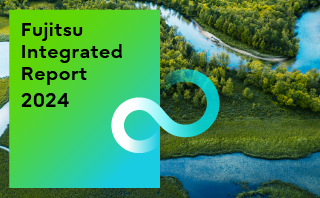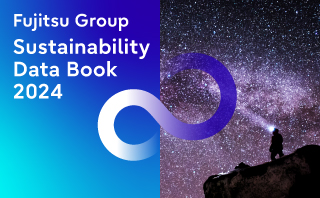-
Sustainability at Fujitsu Group
- Sustainability Management in the Fujitsu Group
- GRB(Global Responsible Business)Goals and Achievments for FY2022
- GRB(Global Responsible Business)Goals for FY2025
- Fujitsu's accessibility
- Stakeholder Engagement
- United Nations Global Compact
- SDG-related Activities in Fujitsu
- External Recognition and Awards
-
Global Responsible Business
- Environment
-
- Environmental Management
- The Fujitsu Group Environmental Vision on Climate Change
- Living in Harmony with Nature (Conservation of Biodiversity)
- Environmental Action Plan
- Environmental Data
- Environmental Communication
- Environmental Social Activities
- Disposal and Recycling of ICT products
- Environmental Considerations in ICT Products
- Governance
-
Data and Documents
- Fujitsu Group Sustainability Data Book 2024
- Social, Governance and Environmental data
- Independent Assurance Report

- GRI Standards / United Nations Global Compact (UNGC) principles Comparison Table
- SASB Standards Comparison Table
- Sustainability Information Disclosure Framework
- Link to regions responsible business reports
- Contact
- Sitemap
Environmental Management System
We are continuously working to improve our ISO14001 (*1) based Environmental Management Systems and to promote Group-wide environmental management.
- (*1)ISO14001:
Environmental Management Systems (EMS) standard determined by the International Organization for Standardization (ISO). Certification is granted to environmentally conscious organizations that develop systems for ongoing reductions in their environmental footprint.
Fujitsu Group’s EMS
Fujitsu Group has constructed EMS based on the ISO 14001 international standard and is promoting environmental improvement activities across the Group. After acquiring ISO 14001 certification for consolidated subsidiaries in Japan at the end of FY 2004, we expanded this effort to include overseas subsidiaries and acquired global integrated certification at the end of FY 2005. Subsequently, the overseas subsidiaries switched to individual certification.
Environmental Management Framework
In April 2020, Fujitsu Group set up the Sustainability Management Committee, which leads the charge for management which takes sustainability initiatives into account. The Sustainability Management Committee has established major sustainability issues which are common globally (Global Responsible Business: GRB) and is working to address them, and the environment is one of those to be addressed.
In order to promote environmental activities, we consider medium- and long-term issues, formulate policies, share business risks and opportunities due to climate change, consider ways to respond, and report regularly to the Sustainability Management Committee in order to improve EMS and strengthen governance. Based on that, final approvals on environmental management at the Fujitsu Group are made at meetings of the Management Council. We have in place environmental organizations in charge of specific issues, composed of relevant parties that go beyond the framework of business groups and business units. Through the promotion structure shown in the figure below, we are moving swiftly to popularize initiatives for addressing environmental issues throughout the Group.
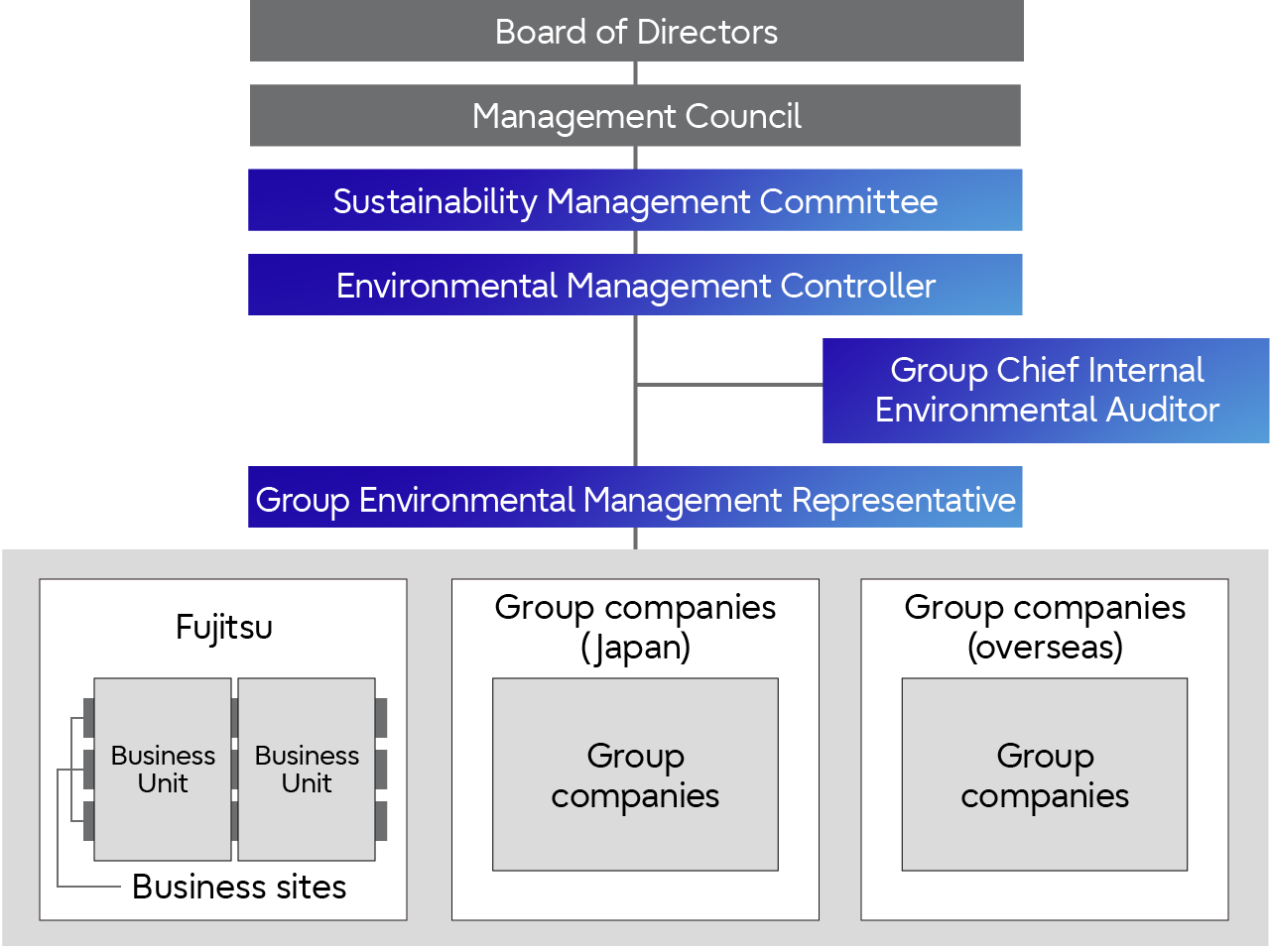 Environmental Management Framework
Environmental Management Framework
Constructing and Operating Environmental Management Systems
The Fujitsu Group has constructed EMS based on the ISO 14001 international standard and is promoting environmental improvement activities across the group. By constructing EMS worldwide, the Fujitsu Group further strengthened its Group governance. This also allows the Group to promote even more efficient and highly effective environmental activities, including understanding the state of activities, legal compliance, and emergency response. As of March 2024, Fujitsu and 22 domestic Group Fujitsu companies had acquired ISO 14001 Group Integrated Certification.
Activity Flow
The Sustainability Management Committee deliberates on the status of environmental activities related to the entire Group, the achievement status of targets, and new activities, which are all regularly reported by the environmental activities promotion organization. For example, the committee determines the directions to be taken for reduction of energy consumption and CO2 emissions, countermeasure for environmental risk, and other environmental medium-to-long term visions. The Sustainability Management Committee also conducts environmental management reviews and is exercising approval authority for the Fujitsu Group Environmental Action Plan.
Organizations in charge of issue-specific targets (e.g., energy, greenhouse gases, waste, water) address those matters professionally, identify areas for improvement based on performance data, consider and promote targets in the Environmental Action Plan, and check the progress of the targets. After receiving progress reports from the organizations, the Environmental Management Controller approves the status of activities and suggestions of future focuses, etc., and instructs all organizations to implement the necessary initiatives. To further disseminate these activities and improve skills, we continually provide environmental training/ education and annual briefing on topics such as climate change (including energy consumption reduction), resources (including water) and waste. Concretely, these measures include the optimization of office air conditioning temperatures, the reduction of energy consumption by saving electricity for lighting and office automation equipment, the reduction of waste by separating waste, and the conservation of water and effective use of water resources.
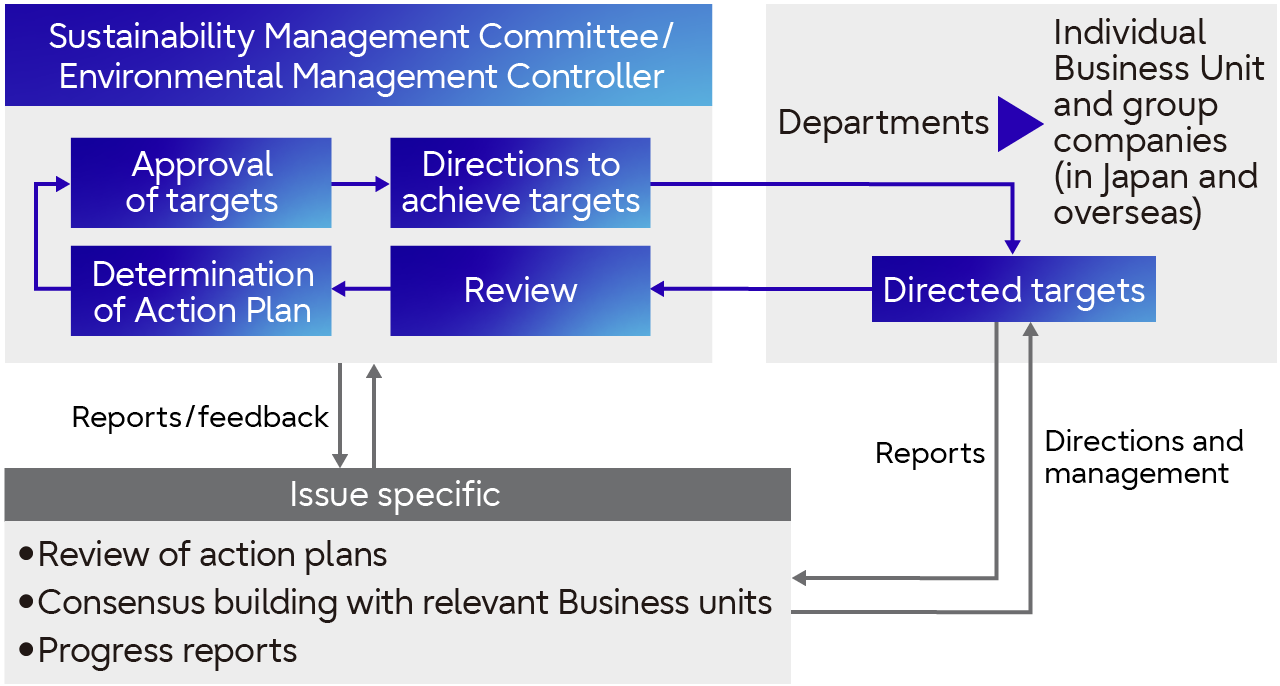 Activity Flow
Activity Flow
Management Based on the Line/Site Matrix Structure
The Fujitsu Group carries out its environmental management within a matrix structure combining (1) “line activities” directly tied to the business operations of various Business Groups and companies (including development of eco-friendly products and the expansion of environmental contribution solutions) and (2) “site activities” to tackle common themes affecting each factory or business location (such as energy conservation and waste reduction). In this way we carry our environmental management according to the same framework as our management, while also reducing the environmental footprint generated by our business activities and the sale of our products and services.
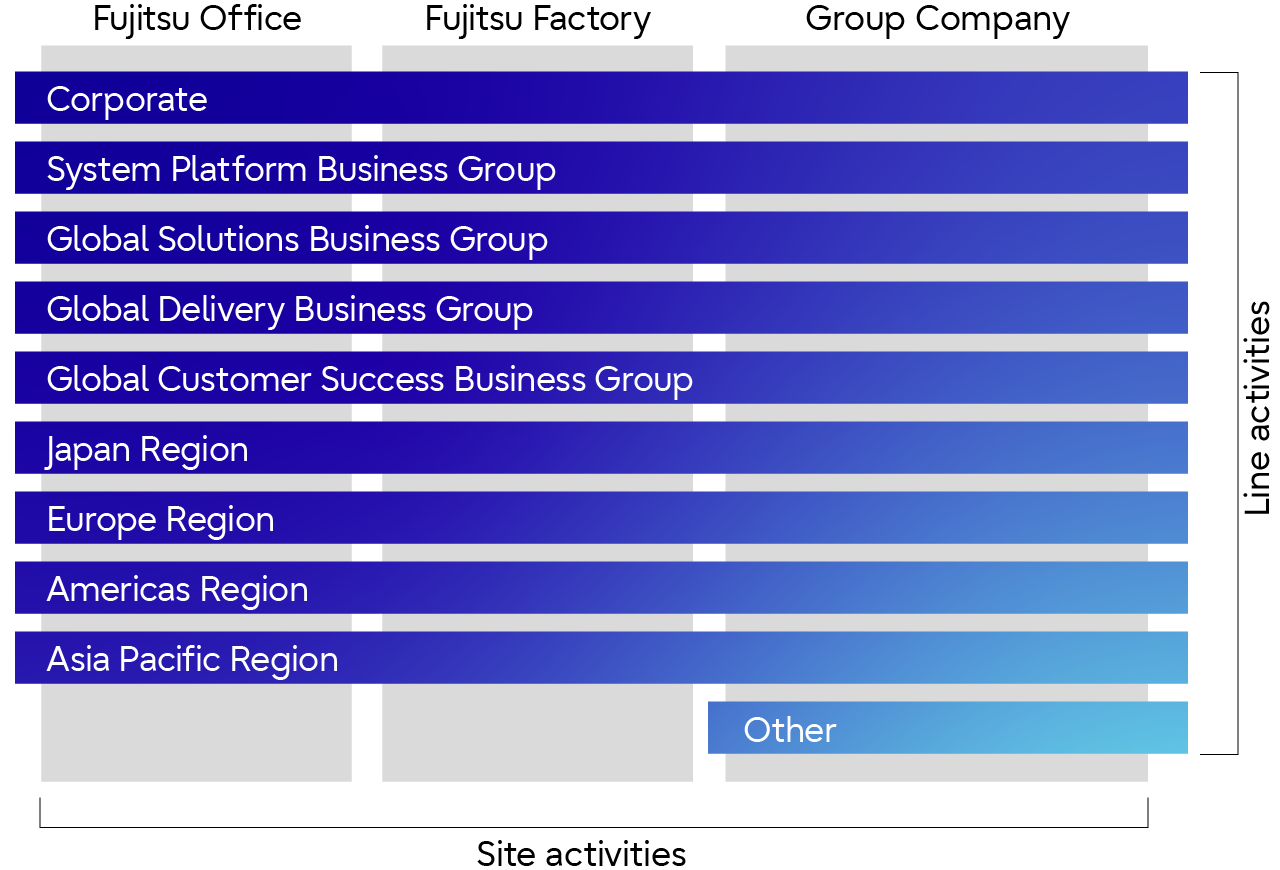 Line/Site Matrix
Line/Site Matrix

